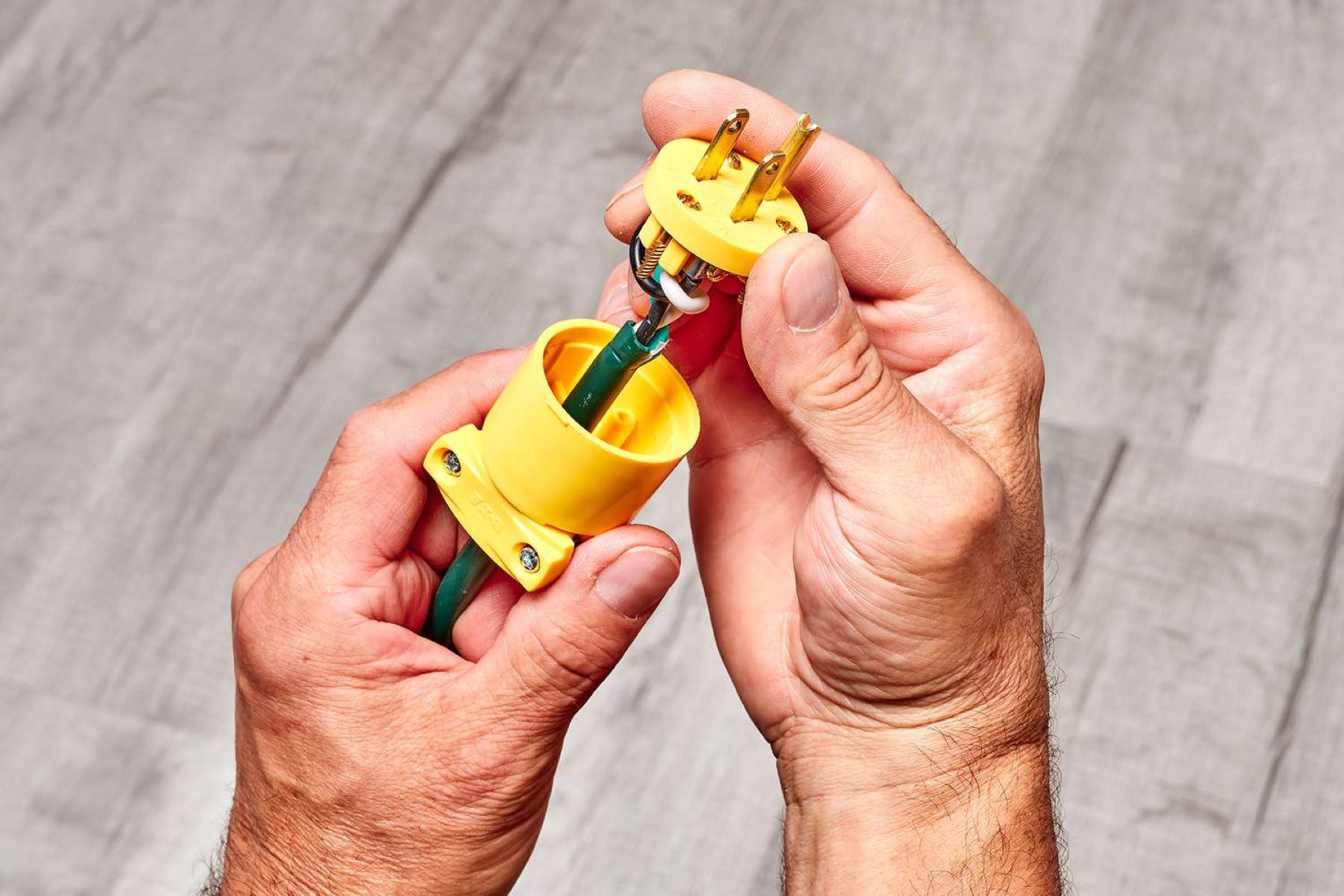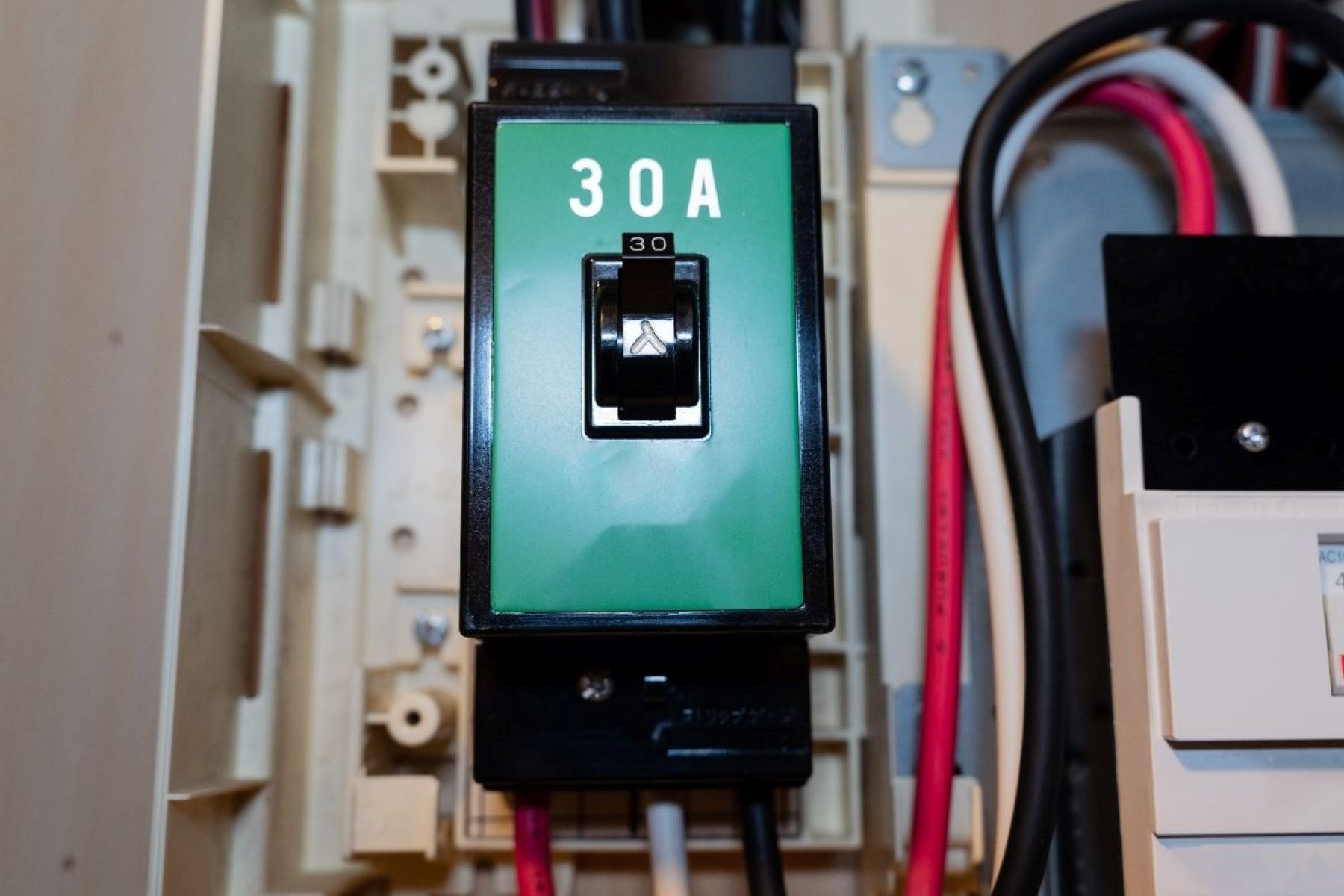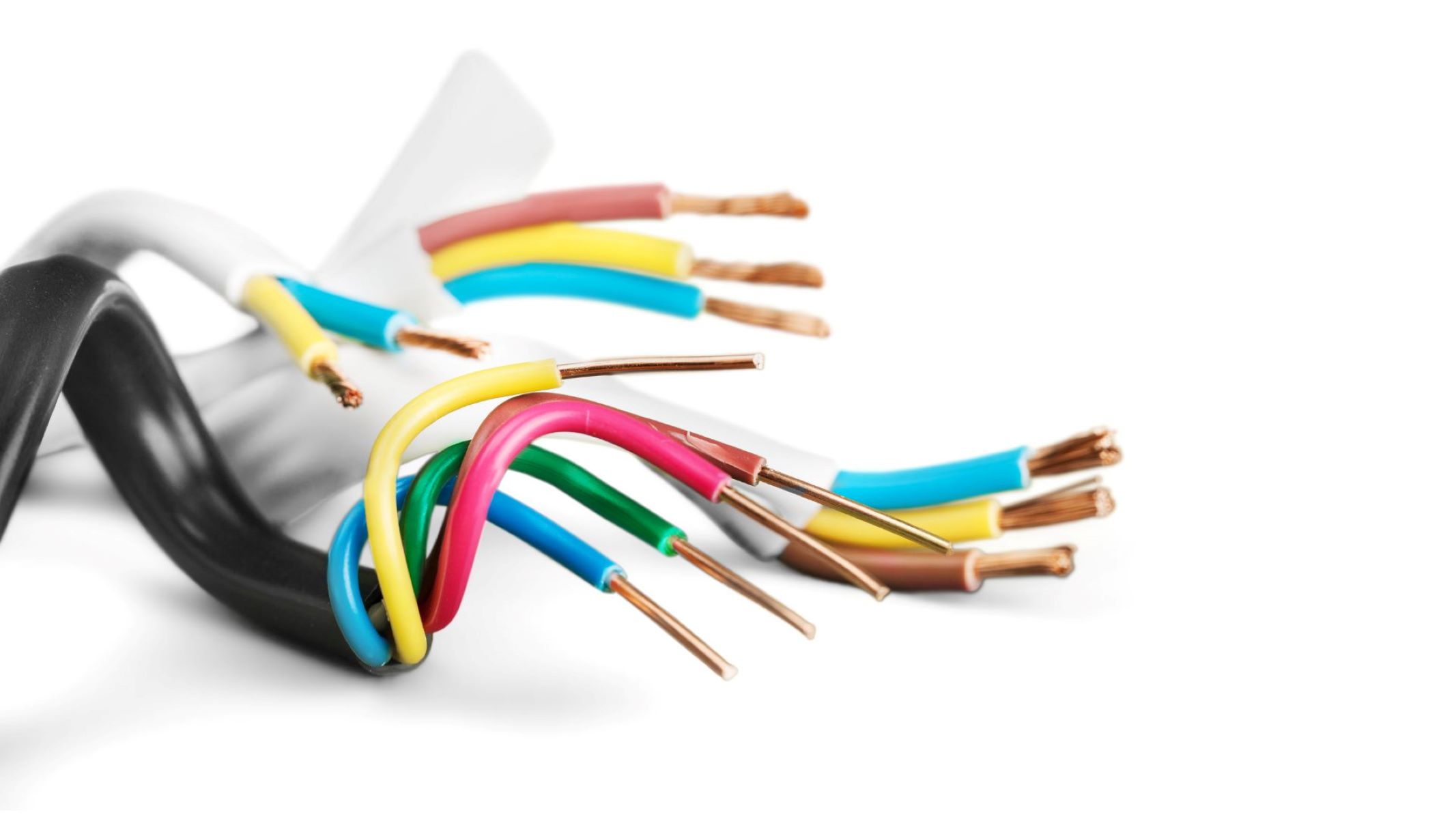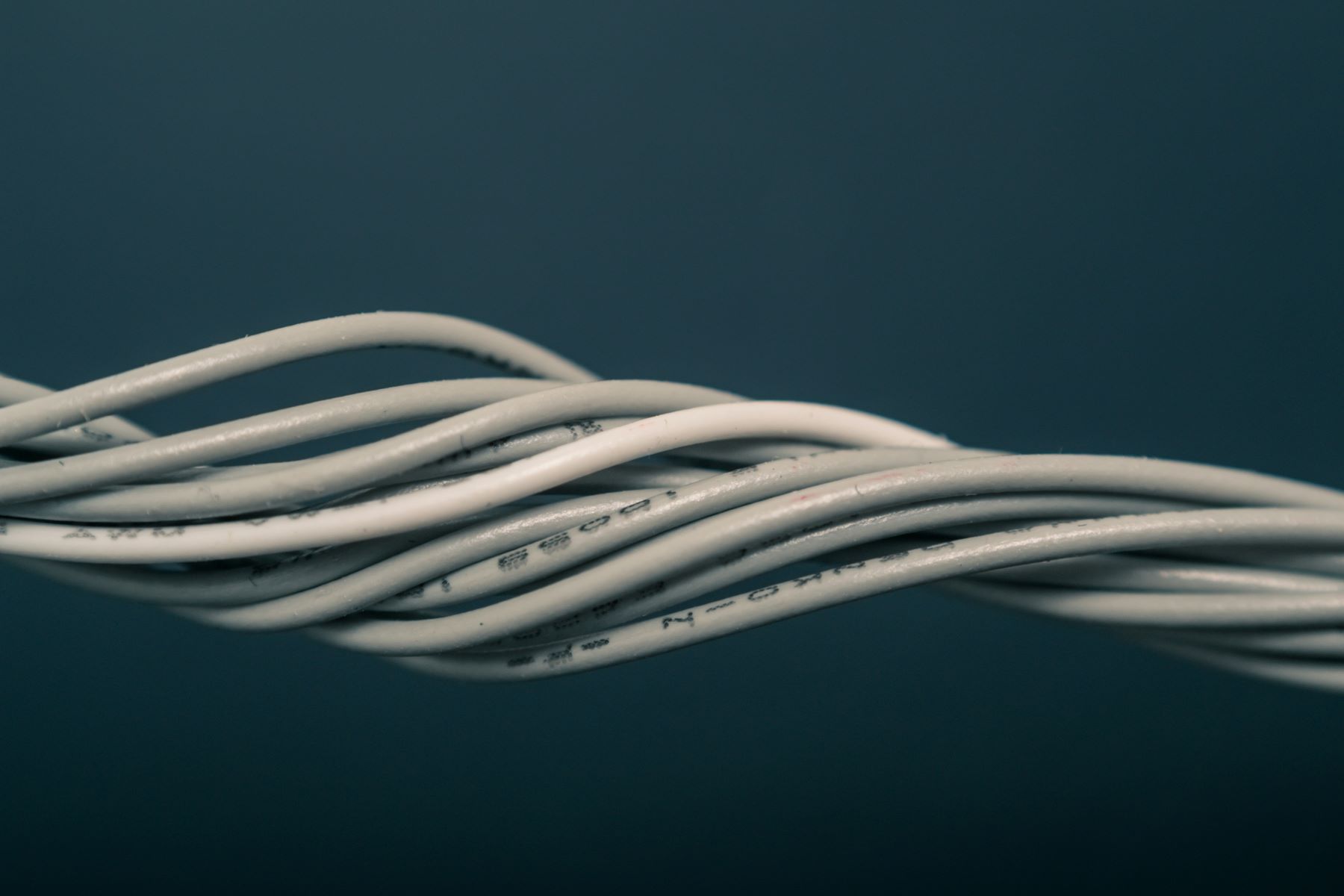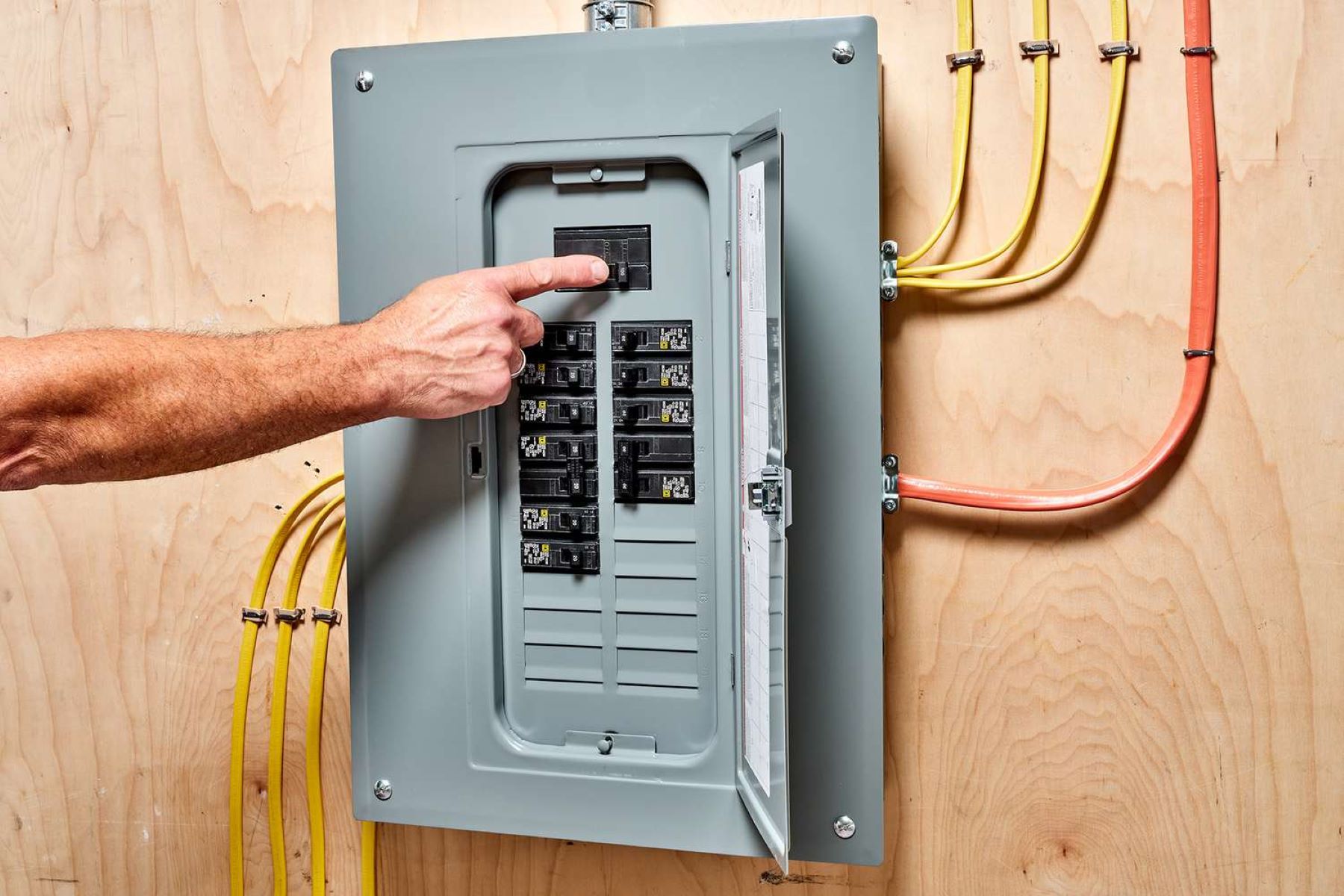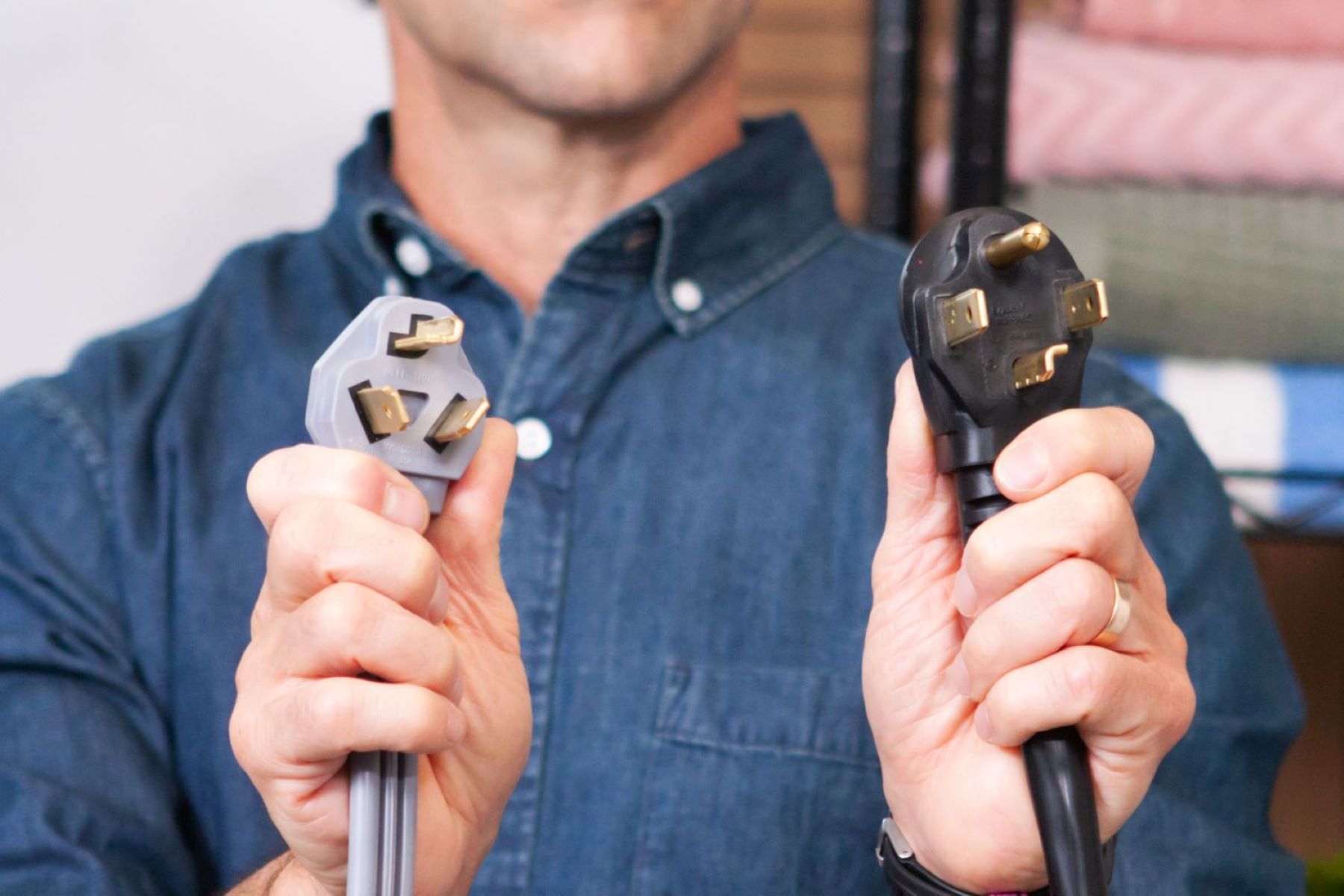Home>Home and Garden>The Ultimate Guide To Wiring Outlets Like A Pro
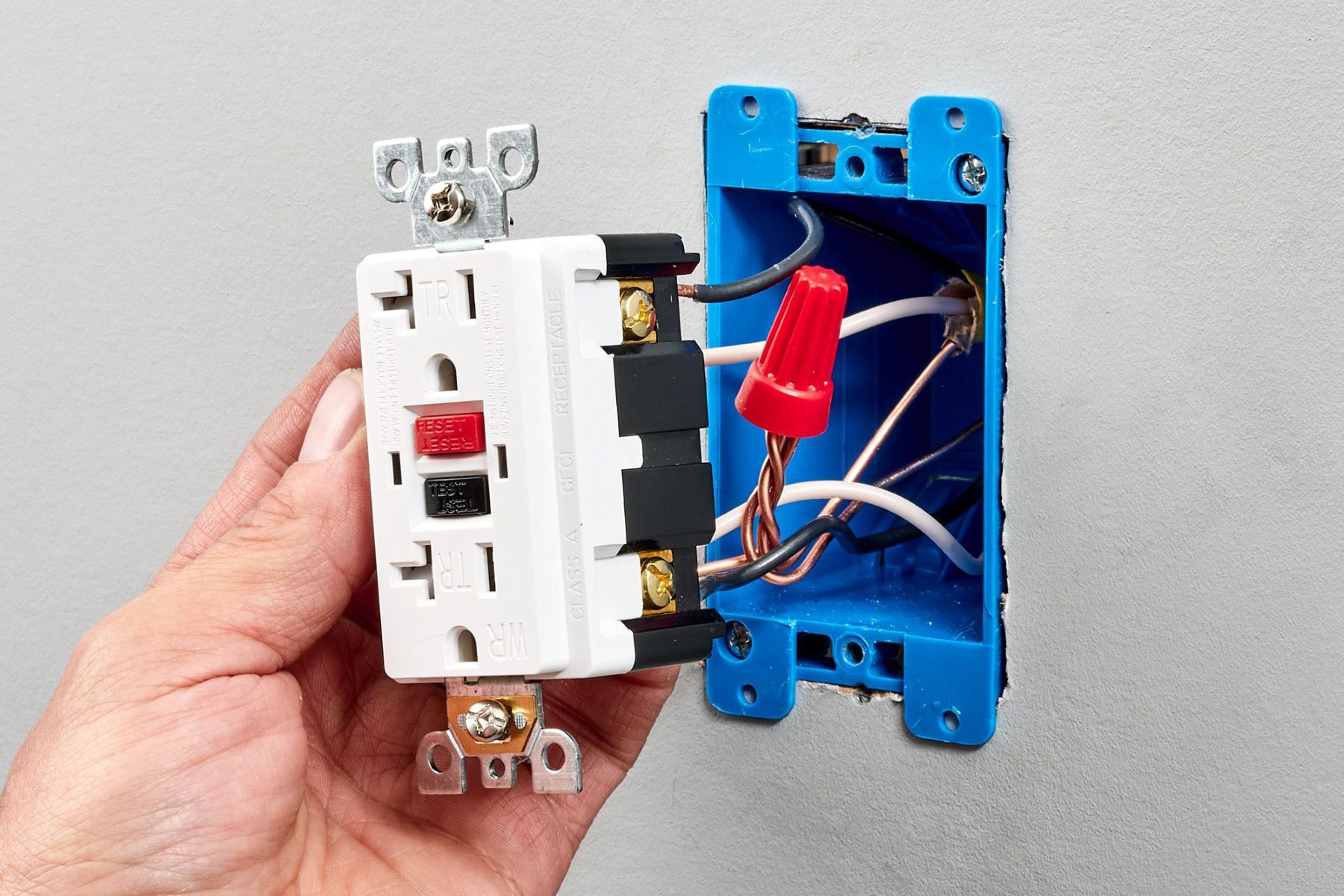

Home and Garden
The Ultimate Guide To Wiring Outlets Like A Pro
Published: February 8, 2024
Learn how to wire outlets like a pro with our ultimate guide for home and garden enthusiasts. Discover expert tips and techniques for safe and efficient electrical installations.
(Many of the links in this article redirect to a specific reviewed product. Your purchase of these products through affiliate links helps to generate commission for Regretless.com, at no extra cost. Learn more)
Table of Contents
Introduction
Wiring outlets is a fundamental skill for any homeowner or DIY enthusiast. Whether you're looking to replace old outlets, install new ones, or simply understand how they work, mastering the art of wiring outlets can save you time and money. In this comprehensive guide, we will delve into the intricacies of wiring outlets, equipping you with the knowledge and confidence to tackle this essential task like a pro.
Understanding the nuances of electrical outlets is crucial for ensuring the safety and functionality of your home's electrical system. From the basic components of an outlet to the tools required for the job, we will cover every aspect in detail. Additionally, we will emphasize the significance of adhering to safety precautions throughout the wiring process, underscoring the importance of protecting yourself and your home from potential hazards.
As we progress, we will provide a step-by-step wiring guide, breaking down the process into manageable and easy-to-follow steps. This will empower you to navigate the intricacies of wiring outlets with precision and clarity. Furthermore, we will explore the essential testing and troubleshooting procedures to verify the integrity of your work and address any potential issues.
By the end of this guide, you will have gained a comprehensive understanding of wiring outlets, enabling you to approach this task with confidence and proficiency. So, let's embark on this enlightening journey, unlocking the secrets of wiring outlets and empowering you to master this essential home improvement skill.
Understanding Electrical Outlets
Electrical outlets, often referred to as receptacles, serve as the primary interface for connecting electrical devices to a power source. Understanding the basic components and functionality of electrical outlets is essential for anyone looking to undertake wiring tasks or simply gain insight into their home's electrical infrastructure.
Types of Outlets
There are various types of electrical outlets, each designed for specific purposes. The most common outlets include:
-
Duplex Outlets: These are the standard outlets found in most homes, featuring two receptacles for plugging in devices.
-
GFCI Outlets: Ground Fault Circuit Interrupter (GFCI) outlets are crucial for areas prone to moisture, such as kitchens, bathrooms, and outdoor spaces. They are equipped with a built-in sensor that trips the circuit if it detects a ground fault, providing enhanced protection against electrical shocks.
-
AFCI Outlets: Arc Fault Circuit Interrupter (AFCI) outlets are designed to mitigate the risk of electrical fires by detecting and interrupting abnormal electrical arcs. They are commonly used in bedrooms and living areas.
-
20-Amp Outlets: These outlets are distinguished by their T-shaped neutral slot and are specifically designed for high-power devices such as kitchen appliances and power tools.
Basic Components
An electrical outlet comprises several key components, including:
-
Receptacles: The slots where devices are plugged in.
-
Hot, Neutral, and Ground Wires: The hot wire (typically black) carries the electrical current, the neutral wire (usually white) completes the circuit, and the ground wire (often green or bare copper) provides a path for stray electrical currents in the event of a fault.
-
Outlet Box: This housing contains the wiring connections and provides a mounting surface for the outlet.
Wiring Configurations
Outlets can be wired in various configurations, such as:
-
Parallel Wiring: In this setup, multiple outlets are connected in parallel to the main power source, allowing each outlet to function independently.
-
Switched Outlet: This configuration enables a portion of the outlet to be controlled by a switch, commonly used for lamps and other devices.
Understanding these fundamental aspects of electrical outlets lays the groundwork for successful wiring projects and fosters a deeper appreciation for the role of outlets in our daily lives.
Tools and Materials Needed
When embarking on a project to wire outlets, having the right tools and materials at your disposal is essential for a successful and efficient outcome. Here's a comprehensive list of the tools and materials you'll need to tackle this task like a seasoned professional.
Tools
-
Voltage Tester: A non-contact voltage tester is indispensable for verifying the absence of electrical current before commencing work on an outlet. This crucial safety tool helps prevent accidental shocks.
-
Wire Cutters and Strippers: These tools are essential for cutting and stripping the insulation from electrical wires with precision, facilitating secure connections.
-
Screwdrivers: Both flathead and Phillips screwdrivers are necessary for loosening and tightening terminal screws on outlets and electrical boxes.
-
Needle-Nose Pliers: These are handy for bending and shaping wires, as well as securing terminal screws.
-
Wire Nuts: These connectors are used to join and insulate wires, ensuring secure and safe electrical connections.
-
Electrical Tape: High-quality electrical tape is crucial for insulating wire connections and providing an added layer of protection.
-
Cordless Drill: A cordless drill with a screwdriver bit simplifies the installation of electrical boxes and outlet receptacles.
-
Fish Tape or Wire Snake: When running new wiring, a fish tape or wire snake helps guide wires through walls and conduits with ease.
Materials
-
Electrical Outlets: Ensure you have the appropriate type and quantity of outlets for your project, such as standard duplex outlets, GFCI outlets, or specialty outlets as needed.
-
Electrical Boxes: These enclosures provide a secure housing for electrical connections and are available in various sizes to accommodate different wiring configurations.
-
Electrical Wire: The type and gauge of wire required will depend on the specific electrical requirements of your project. Common types include non-metallic sheathed cable (NM) and armored cable (AC).
-
Wire Staples or Clamps: These are used to secure electrical cables to framing members and prevent them from shifting or coming into contact with sharp edges.
-
Cable Connectors: These fittings are essential for securing and protecting the ends of electrical cables where they enter electrical boxes.
-
Outlet Covers: Once the outlets are installed, durable and aesthetically pleasing covers are needed to complete the installation.
By ensuring you have these tools and materials on hand, you'll be well-prepared to tackle the wiring of outlets with confidence and precision, setting the stage for a successful and satisfying home improvement endeavor.
Safety Precautions
When it comes to working with electrical systems, safety should always be the foremost priority. Electrical work inherently carries the risk of shock, fire, and other hazards, making it crucial to adhere to stringent safety precautions throughout the wiring process. By prioritizing safety, you not only protect yourself from potential harm but also safeguard your home from electrical mishaps. Here are the essential safety precautions to observe when wiring outlets:
-
Power Disconnection: Before initiating any work on electrical outlets, it is imperative to turn off the power supply at the circuit breaker or fuse box. Verifying the absence of electrical current using a reliable voltage tester is essential to ensure that the circuits are truly de-energized.
-
Personal Protective Equipment (PPE): Wearing appropriate PPE, such as insulated gloves and safety goggles, provides an additional layer of protection against electrical hazards. Insulated tools should also be used to minimize the risk of shock.
-
Work Area Inspection: Thoroughly inspect the work area for any potential hazards, such as water leaks, damp conditions, or flammable materials. Ensure that the workspace is well-lit and adequately ventilated to promote a safe working environment.
-
Proper Wiring Techniques: Adhering to industry-standard wiring practices and techniques is paramount for ensuring the integrity and safety of electrical connections. This includes securely fastening wires, using the correct wire gauge, and avoiding overloading circuits.
-
Ground Fault Circuit Interrupter (GFCI) Protection: When working in areas where moisture is present, such as kitchens, bathrooms, and outdoor spaces, it is essential to utilize GFCI outlets to provide enhanced protection against electrical shocks.
-
Avoiding Overcrowding: Electrical boxes should never be overcrowded with wires or devices, as this can lead to overheating and pose a fire hazard. Adhering to the recommended fill capacities for electrical boxes is crucial for maintaining safety.
-
Regular Inspections: Periodically inspecting outlets and electrical connections for signs of wear, damage, or overheating is essential for identifying potential issues before they escalate into safety hazards.
By diligently adhering to these safety precautions, you can mitigate the inherent risks associated with electrical work and ensure a safe and secure wiring process. Prioritizing safety not only protects you and your home but also fosters a culture of responsibility and mindfulness when working with electrical systems.
Step-by-Step Wiring Guide
Wiring outlets may seem daunting at first, but breaking down the process into manageable steps can simplify the task and instill confidence in your abilities. By following this step-by-step guide, you'll be equipped with the knowledge and practical insights to wire outlets like a seasoned professional.
-
Turn Off the Power: Before commencing any work, switch off the power supply to the circuit you'll be working on at the main electrical panel. Confirm the absence of electrical current using a voltage tester.
-
Prepare the Work Area: Ensure the work area is well-lit and free from any potential hazards. Wear appropriate personal protective equipment, including insulated gloves and safety goggles, to safeguard against electrical mishaps.
-
Remove the Old Outlet: If replacing an existing outlet, carefully unscrew the outlet cover and the outlet itself from the electrical box. Take note of the existing wiring configuration and label the wires for reference.
-
Prepare the Wires: If installing a new outlet, measure, cut, and strip the insulation from the electrical wires as per the required length using wire cutters and strippers. Ensure the wires are prepared and organized for easy connection.
-
Connect the Wires: Using the appropriate wiring configuration (parallel wiring for multiple outlets, switched wiring if needed), connect the hot (black), neutral (white), and ground (green or bare copper) wires to the corresponding terminals on the outlet. Secure the connections tightly and ensure there are no loose wires.
-
Secure the Outlet: Carefully tuck the connected wires into the electrical box, ensuring they are not pinched or crimped. Secure the outlet to the electrical box using the provided screws, ensuring it is flush with the wall surface.
-
Test the Outlet: Once the outlet is securely installed, switch the power back on and use a voltage tester to verify that the outlet is receiving power. Test the functionality of the outlet by plugging in a small electrical device.
-
Install the Outlet Cover: Once the outlet is confirmed to be functioning correctly, attach the outlet cover using the provided screws, ensuring it is aligned and secure.
By diligently following these step-by-step instructions, you can successfully wire outlets with precision and confidence. Remember to always prioritize safety and adhere to local electrical codes and regulations throughout the wiring process. With practice and attention to detail, you'll master the art of wiring outlets, enhancing the functionality and aesthetics of your living space.
Testing and Troubleshooting
After completing the wiring of outlets, thorough testing and troubleshooting are essential to ensure the integrity and functionality of the electrical connections. By meticulously conducting tests and addressing any potential issues, you can guarantee the safety and reliability of the installed outlets. Here's a detailed exploration of the testing and troubleshooting procedures to verify the efficacy of your wiring work.
Testing Procedures
-
Outlet Functionality: Begin by testing each outlet to confirm that it is receiving power and functioning as intended. Use a voltage tester to verify the presence of electrical current at the outlet. This step is crucial for identifying any wiring errors or faulty connections.
-
Polarity Testing: Check the polarity of the outlets to ensure that the hot (black) and neutral (white) wires are correctly connected. A polarity tester can be used to ascertain that the outlet is wired in the correct orientation, preventing potential electrical hazards.
-
Grounding Verification: Confirm that the grounding system is effectively connected by using a multimeter to test for continuity between the ground terminal of the outlet and the grounding conductor. A properly grounded outlet is vital for protecting against electrical shocks and ensuring equipment safety.
-
GFCI and AFCI Testing: For GFCI and AFCI outlets, conduct specific tests to ensure their proper operation. Press the "test" button on GFCI outlets to verify that the circuit interrupts as intended. Similarly, test AFCI outlets to ensure they detect and mitigate abnormal electrical arcs effectively.
Troubleshooting Guidelines
-
Identifying Faulty Connections: If an outlet fails to function or exhibits irregular behavior during testing, carefully inspect the wiring connections for any signs of looseness, damage, or improper termination. Revisiting the wiring and rectifying any faulty connections is crucial for restoring the outlet's functionality.
-
Circuit Overload Assessment: In cases where outlets are connected to a circuit that frequently trips or exhibits erratic behavior, assess the electrical load on the circuit. Overloaded circuits can lead to overheating and pose fire hazards. Consider redistributing the load or installing additional circuits to alleviate the strain on the electrical system.
-
Intermittent Fault Diagnosis: When encountering intermittent issues with outlets, such as sporadic power loss or flickering lights, conduct a comprehensive inspection of the wiring and connections. Intermittent faults often stem from loose or damaged wiring, necessitating meticulous troubleshooting to pinpoint and resolve the underlying issues.
-
Professional Consultation: If troubleshooting efforts prove challenging or if there are persistent electrical anomalies, seeking assistance from a qualified electrician is advisable. Professional expertise can provide invaluable insights and solutions for addressing complex electrical issues and ensuring the long-term safety and functionality of the electrical system.
By diligently conducting comprehensive testing and troubleshooting, you can identify and rectify any potential wiring discrepancies or electrical irregularities, thereby ensuring the safety and reliability of the installed outlets. These meticulous procedures underscore the commitment to upholding electrical safety standards and fostering a secure living environment for you and your family.
Conclusion
In conclusion, mastering the art of wiring outlets is a valuable skill that empowers homeowners and DIY enthusiasts to enhance the functionality and safety of their living spaces. Throughout this comprehensive guide, we have delved into the intricate world of electrical outlets, providing a wealth of knowledge and practical insights to equip you with the confidence and proficiency to tackle wiring projects with precision.
By gaining a deeper understanding of the various types of outlets, their fundamental components, and the essential tools and materials required for wiring, you have laid a solid foundation for embarking on wiring endeavors with confidence. The emphasis on safety precautions underscores the paramount importance of prioritizing personal and home safety when engaging in electrical work, fostering a culture of responsibility and mindfulness.
The step-by-step wiring guide presented in this comprehensive resource serves as a roadmap for navigating the intricacies of wiring outlets. By following the outlined procedures and adhering to safety protocols, you can approach wiring projects methodically and with assurance, ensuring the successful installation of outlets while mitigating potential hazards.
Furthermore, the detailed exploration of testing and troubleshooting procedures underscores the commitment to upholding electrical safety standards and fostering a secure living environment. By diligently conducting tests and addressing any potential issues, you can guarantee the integrity and functionality of the installed outlets, thereby enhancing the safety and reliability of your home's electrical system.
As you embark on your journey to wire outlets like a seasoned professional, remember that practice and attention to detail are key. With each successful wiring project, you will further refine your skills and deepen your understanding of electrical systems, paving the way for a more confident and proficient approach to home improvement tasks.
Ultimately, by mastering the art of wiring outlets, you not only enhance the functionality and aesthetics of your living space but also cultivate a sense of empowerment and self-sufficiency. The knowledge and insights gained from this guide will serve as a valuable asset as you embark on future wiring projects, enabling you to contribute to the safety and efficiency of your home's electrical infrastructure.
In closing, may this guide inspire you to embrace the art of wiring outlets with enthusiasm and confidence, empowering you to embark on fulfilling and successful home improvement endeavors.

